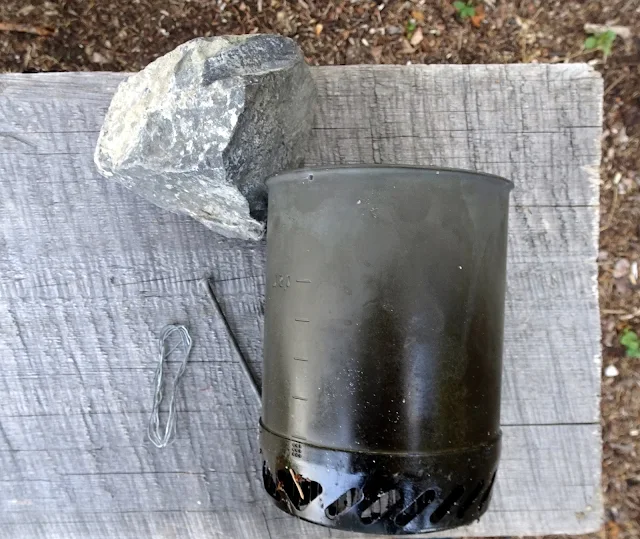The Road to Ram did not turn out as expected, nor did it end up being as long as expected. The days I spent in the Northwest Territories, however, were certainly not uneventful. It started with a snorting sound behind my back, as I was fixing my pack and waiting for a ride across the South Nahanni River.Click on the photos for a better experience.
By Jörgen Johansson
By Jörgen Johansson
 |
| The snorting came from a sizable brown bear that climbed onto the shore some 30-40 meters away from me, shook the water from out of his fur, and ambled away. |
 |
| Not so elegant, but something I would be able to hold/hang above the fire instead of balancing it. |
 |
| Parts of the trail were pretty nice. Being a winter trail in flat country it had been cut ruler straight in dryer areas, where there were trees. |
 |
| The plan was to follow the Franklin Mountains north (to the right) to Grainger Pass, which was the second notch in the ridgeline I would come to, the first being Bluefish Lake. |
 |
| For the first couple of hours after lunch the going was allright, inspite of dense stands of trees. This is what I had expected and was prepared for, since my bushwhack not far from here, backpacking into the headwaters of the Nahanni in 2011. |
 |
| I needed water, and my GPS was extremely important in order to find these little trickles in the dense forest. I found a space big enough to pitch my tent near one of them. |
 |
| Rolling out of my sleeping bag the following morning, I walked down through the brush to where I could see the lake and the swirling morning mists. |
 |
| Like it does in a movie or a book, from the right enters a moose, trudging through the boggy area closest to the lake. |
 |
| What is going on? After a while she detected me and my clicking camera and snuck away in among the trees. |
 |
| When evening came, so did legendary bush pilot Ted Grant, owner of Simpson Air. |
 |
| The canyons of Ram Plateau offered a stunning scenery. |
 | |
| The size of the area, the depth of the canyons where much more impressive than I wold have thought. Maybe one should fly in and spend some weeks just exploring? |



















Tack för att du delar med dig! Verkar ha varit en fantastisk upplevelse trots att allt inte gick som tänkt.
ReplyDelete